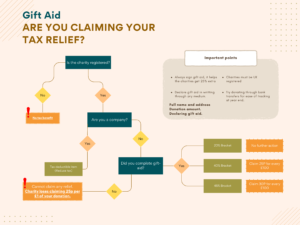Correcting VAT errors is crucial for businesses to maintain compliance and avoid penalties. The HM Revenue and Customs (HMRC) provides clear guidelines on how to address these errors, including the types of errors and the thresholds for correction. Here’s a comprehensive overview.
Types of VAT Errors
VAT errors can generally be categorized into two main types:
- Errors in VAT Records: These include mistakes in recording VAT transactions, such as incorrect calculations or misclassifications of supplies. If you discover an error before submitting your VAT return, you can correct it directly in your records.
- Errors on Submitted VAT Returns: If you find an error after submitting your VAT return, you must follow specific procedures to correct it. This includes:
- Under-declarations: When the VAT you reported is less than what it should have been.
- Over-declarations: When you reported more VAT than necessary, which may lead to a refund claim.
HMRC’s Reporting Thresholds
HMRC allows businesses to correct VAT errors without extensive reporting under certain thresholds. Here’s how it works:
- Errors of £10,000 or Less
- If the net value of the error is £10,000 or less, you can correct it in your next VAT return without notifying HMRC. This is the simplest scenario and applies to both under-declarations and over-declarations.
- Errors Between £10,000 and £50,000
- For errors in this range, you can still correct them in your next return only if the error does not exceed 1% of your total sales (as reported in Box 6 of your VAT return). If it does exceed this threshold, you must report it separately to HMRC.
- Errors Over £50,000
- Any error exceeding £50,000 must be reported to HMRC, regardless of the percentage of total sales. This includes both deliberate and non-deliberate errors.
For correcting VAT errors over £50,000, you need to fill out VAT652. This form is specifically designed for reporting errors that exceed the threshold, whether they are deliberate or non-deliberate.
- Deliberate Errors
- If an error was made deliberately, it must always be reported to HMRC, regardless of the amount. This is crucial to avoid penalties and maintain transparency.
Correcting VAT Errors: Steps to Follow
- Identify the Error: Review your records and VAT returns to pinpoint where the error occurred.
- Determine the Type and Value: Classify the error as either a record error or a return error and assess its value.
- Choose the Correct Method:
- For errors under £10,000 or within the 1% threshold, adjust your next VAT return.
- For larger errors, prepare to report them separately using the appropriate forms (e.g., VAT652 for deliberate errors).
- Document Everything: Keep detailed records of the error, including how it occurred and the steps taken to correct it. This documentation is vital for any future audits.
Conclusion
Correcting VAT errors is essential for compliance and financial accuracy. By understanding the types of errors and the thresholds set by HMRC, businesses can navigate the correction process more effectively. Always ensure that you maintain clear records and report any significant errors promptly to avoid penalties.









